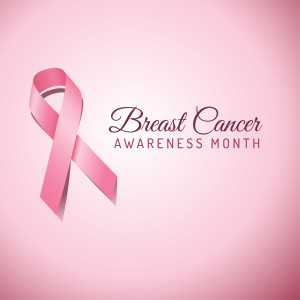Why Every Month Should Be Breast Cancer Awareness Month
 One in eight women will be diagnosed with breast cancer in their lifetime, according to the National Breast Cancer Foundation, Inc. Look around your office, your family gathering, or your next social event and consider the fact that 13 percent of the women in the room will be diagnosed with breast cancer in their lifetime. You may already be able to name family members, friends, and co-workers who have bravely faced a positive diagnosis. The reality that breast cancer has on the women in our lives is staggering.
One in eight women will be diagnosed with breast cancer in their lifetime, according to the National Breast Cancer Foundation, Inc. Look around your office, your family gathering, or your next social event and consider the fact that 13 percent of the women in the room will be diagnosed with breast cancer in their lifetime. You may already be able to name family members, friends, and co-workers who have bravely faced a positive diagnosis. The reality that breast cancer has on the women in our lives is staggering.
In October we honor the victims and survivors of this devastating disease by acknowledging Breast Cancer Awareness Month. However, thirty days every year doesn’t seem like nearly enough time to spend recognizing the impact of breast cancer, especially when you consider that each year over 246,660 women in the United States will be diagnosed with breast cancer, and more than 40,000 will die.
Every month should be breast cancer awareness month. Every month we should honor those we have lost, support those in treatment, and teach the young women in our lives how to lower their risk of being diagnosed in their lifetime. To help you to reduce your own risk of breast cancer, this October, and every month, remember to conduct a breast self-exam. According to breastcancer.org, 20 percent of diagnosed breast cancers are found through a physical exam, rather than by a mammography. To help you to remember to conduct your monthly self-exam, follow these tips:
- Pick a day and stick to it. Choose one day every month for your self-exam and stick to it. Choose a day that’s easy to remember like the first of the month, or a few days after your period ends.
- Buddy-up. Ask a family member or friend to be your self-exam buddy and work to remind one another each month to perform your exams. Holding one another accountable will help ensure you each complete this potentially life-saving task each month.
- Write it on your calendars. All of them. If you’re like most busy multi-tasking women, you have more than one calendar helping you to stay organized. Add your breast self-exam reminder to all of your calendars, including your work calendar, smart-phone calendar, desk agenda, and family planner. When you see reminders in multiple places, a task becomes impossible to ignore.
- There’s an app for that. There are a variety of free Apple® and AndroidTM mobile apps that can help remind you to perform your breast self-exam each month. Pick the app with the features that best meet your needs.
- Sign-up for an email reminder. If you prefer to have your task reminders pop into your inbox, sign-up for a monthly breast self-exam reminder from the Maurer Foundation or cancer.org.
This October, make a promise. Make a promise to yourself and to all the women in your life that you will keep breast cancer awareness and prevention top of mind not just in October when we are surrounded by pink ribbons and advocacy walks, but all year long. With a perpetual focus on the importance of preventing and treating this disease, we face the best odds of reducing our number of annual victims from 40,000 to zero.
More
